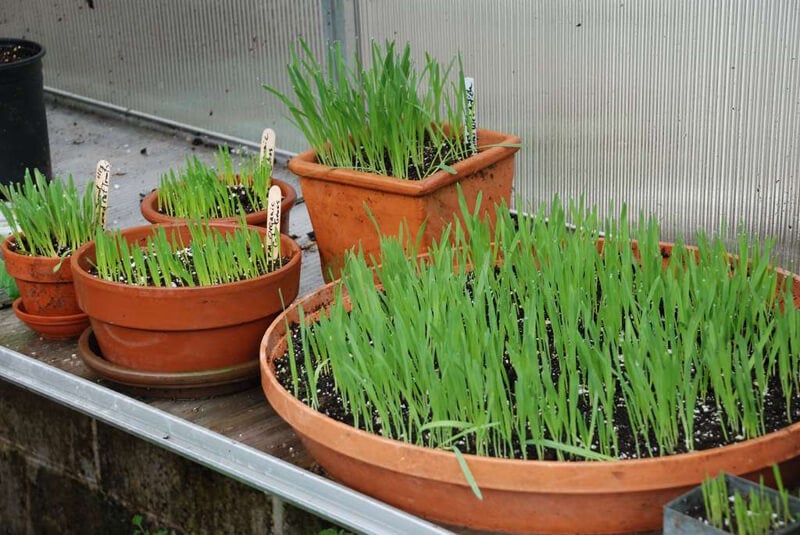Both cats and dogs need a little grass in their diets, especially if they do not spend a lot of time outdoors. So if you have a pet, growing pet grass is a great idea. This grass is also called intermediate wheatgrass, but it is not the wheat from which bread flour is made. This is originally an Asian pasture grass that was introduced to the US many years ago for pasture and fodder. You can grow it in pots for your indoor pets, or plant it in beds outdoors for animals that spend time outside.
Quick Guide to Growing Pet Grass
- Plant pet grass in spring after the last frost, or grow it year-round indoors. It's a great healthy snack to grow next your pet's food and water dish or beside their bed.
- You can also grow pet grass in a sunny area with fertile, well-drained soil. Even outdoors, container growing is an excellent option.
- Before planting outside, add nutrients to your soil by mixing in several inches of aged compost or other rich organic matter.
- Keep soil consistently moist, but be careful not to overwater.
- Once pet grass is established, allow pets to snack on it regularly.

In the Garden
Some dogs and cats seem to crave a "salad"! Pets actually get nutrition from their grazing, not to mention the breath cleansing chlorophyll and a good cleansing of their digestive system.
To satisfy your pets' cravings without the danger of parasites or pesticides that might be found in the garden, try growing pet grass in a container for them to enjoy. If your pet lives primarily indoors, plant two containers, one to have indoors while the other goes back out into the sun to regain its vigor. Use a container that is the right height for your pet, so they don't have to strain to reach the grass.
Soil, Planting, and Care
Growing pet grass is easy, especially when you begin with strong young Bonnie Plants® pet grass plants, which will be ready for nibbling not long after planting. Like other grasses, pet grass prefers full sun and well-drained soil kept evenly moist. The simplest way to grow pet grass is in containers filled with a premium potting mix like Miracle-Gro® Performance Organics All Purpose Container Mix Not only is it organic, but it's also enriched with aged compost to provide lots of nutrition for your pet grass.
Troubleshooting
Avoid overwatering. If the soil is kept too soggy, the roots could rot.
Harvest and Storage
Allow your pet to eat the plant right from the container (or garden area) in which it's being grown. When the plant begins to show signs of age or begins to fail, simply pull it and plant a new one.
FAQs
What is pet grass exactly?
The seeds used to grow pet grass are actually a form of perennial wheat. While not grown commercially, it is edible.
Why do pets need grass?
Some experts think that it helps cats deal with hairballs, adds fiber, and even supplements their diet with folic acid. It is thought that dogs need fiber, and they need greens as part of their naturally omnivorous diet. Both cats and dogs seem to crave grass from time to time.
Can I just use any grass for my pets?
Dogs and cats alike will chew on grass outdoors, but it could harbor fertilizer, pesticides, and parasites. In addition, many of our pets, particularly cats, are restricted to life indoors. Bonnie's pet grass is actually an edible grain. It is just one way to be sure you are giving your pets something that is good for them, and for indoor pets, it provides a little taste of the great outdoors.
How do I teach my dog the difference between eating pet grass in a pot and eating a houseplant in a pot?
This is a concern, especially because many houseplants would be detrimental to your pet's health if ingested. We suggest placing the pot of pet grass in the area in which your dog eats, away from other houseplants. Hopefully, the appeal of pet grass over other plants will reinforce good behavior. If there is any problem, go to your pet store and ask for a bitter-tasting spray that will discourage your dog from sampling the other greenery.




 Herbs
Herbs
 Vegetables
Vegetables
 Fruit
Fruit
 Flowers
Flowers
 Succulents
Succulents


